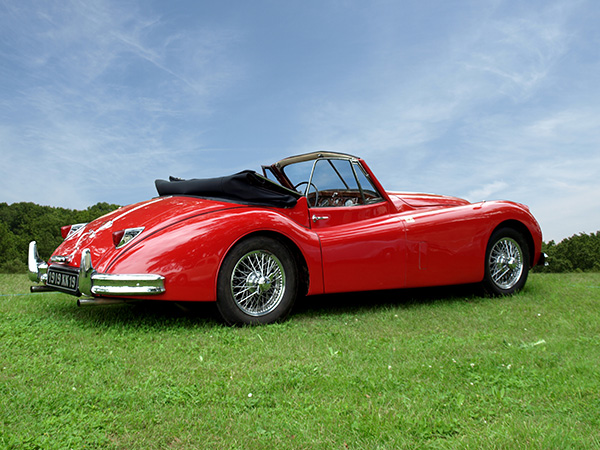
Jaguar is one of the most iconic names in the automotive world, known for its elegant design, high-performance cars, and rich history. But how did this prestigious brand go from making sidecars for motorcycles in 1922 to producing some of the most luxurious and technologically advanced vehicles on the road today? The story of Jaguar is a remarkable journey of innovation, perseverance, and timeless design. Let’s take a closer look at the fascinating evolution of Jaguar, from its beginnings to its status as a luxury car.
From Sidecars to Automobiles
Jaguar’s origins can be traced back to 1922 when two motorcycle enthusiasts, William Lyons and William Walmsley, founded the Swallow Sidecar Company in Blackpool, England. Their initial focus was on producing sidecars for motorcycles, but their ambitions quickly grew beyond the world of two-wheelers. In 1935, the company introduced its first automobile under the name SS Jaguar, marking the beginning of a new chapter.
The launch of the SS Jaguar 2.5-liter sedan was a game-changer. With its sleek design and powerful engine, it quickly gained attention, establishing Jaguar as a serious contender in the automotive industry. However, the "SS" prefix was dropped after World War II due to its unfortunate association with Nazi Germany, and from 1945 onward, the company was simply known as Jaguar.
The Birth of the E-Type
One of the most iconic cars in Jaguar’s history is the E-Type, which debuted in 1961. This model was a perfect blend of beauty and performance, and it set new standards for sports cars. With its long hood, flowing lines, and impressive speed capabilities, the E-Type quickly became a symbol of the swinging '60s. Enzo Ferrari, founder of Ferrari, famously called it “the most beautiful car ever made.”
The E-Type wasn’t just about looks; it was a technological marvel. Equipped with a 3.8-liter six-cylinder engine, it could reach top speeds of up to 150 mph. The car’s monocoque construction and four-wheel disc brakes were groundbreaking at the time, offering drivers an exhilarating and refined driving experience.
The 1970s and 1980s
Like many car manufacturers, Jaguar faced significant challenges during the 1970s. Financial difficulties, labor strikes, and issues with quality control led to a decline in the brand's reputation. In 1968, Jaguar merged with British Leyland, a move that led to further instability.
However, Jaguar’s resilience shone through during the 1980s when the company regained its footing. Under the leadership of Sir John Egan, Jaguar was privatized, and a renewed focus on quality helped restore the brand’s credibility. The introduction of the XJ-S and the XJ40 saloons in this era further solidified Jaguar's reputation for producing stylish, luxurious cars that were fun to drive.
Modern Jaguar
Jaguar’s evolution didn’t stop there. In 1999, the company was acquired by Ford, and later, in 2008, it was sold to Tata Motors, an Indian multinational automotive giant. Under Tata’s ownership, Jaguar experienced a renaissance, with a renewed emphasis on advanced technology, sustainability, and high-performance engineering.
Recent models like the Jaguar F-Type and the all-electric I-PACE have pushed the boundaries of what a Jaguar can be. The F-Type brought Jaguar back to its roots, offering a powerful sports car that nods to the legacy of the E-Type, while the I-PACE, Jaguar’s first fully electric vehicle, demonstrates the company’s commitment to a greener, more sustainable future.
Jaguar's current focus on electric vehicles is in line with the broader trend of the automotive industry shifting towards cleaner, more efficient energy sources. As the brand continues to innovate, it aims to become fully electric by 2025, signaling the dawn of a new era for Jaguar cars.
What’s Next for Jaguar
As Jaguar approaches its centennial, it’s clear that the brand’s legacy is built on a foundation of craftsmanship, innovation, and a commitment to delivering both style and substance. While the company embraces cutting-edge technology, the essence of Jaguar—a car that offers performance, luxury, and timeless design—remains unchanged.
The future looks bright for Jaguar as it continues to evolve with the times while maintaining the essence that has made it a beloved brand for almost a century. Whether through the development of electric vehicles or a continued focus on design excellence, Jaguar’s journey from 1922 to today proves that it remains one of the most captivating and forward-thinking automotive brands in the world.
Your Jaguar deserves the best care. Schedule an inspection or service with Exclusive Motorworks, where our trained technicians will ensure your vehicle performs at its best.